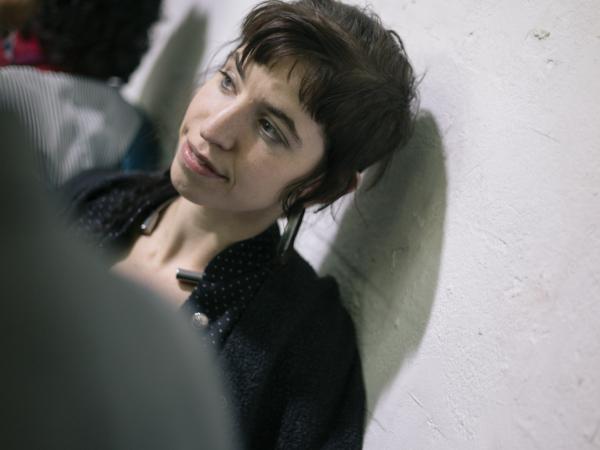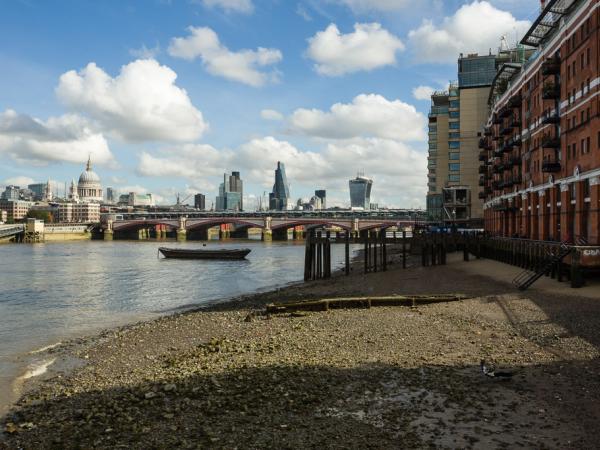UOMINI IN CIMA AD UNA SPINA DORSALE, CAMMINANO SU UNA PIAZZA
Una spina dorsale che linearmente potrebbe essere di lunghezza pari ad una persona della mia altezza, che si rispecchia.
“rispecchia” è qui inteso nel senso di Nishida, ovvero “rispecchiare” significa lasciare che si costituiscano le forme.
Spina dorsale-Forma intesa come manifestazione di energia che è perennemente dialettica tra permanenza e mutamento, particolarmente rilevabile a seconda del raggio di inclinazione della fonte luminosa, per eccellenza il sole.
Nella costruzione della parte della scultura che, per semplificare, potremmo chiamare torre, sono in corso in circa duecento (200) variazioni verticali sul lato sinistro e altrettante sul lato destro; tenendo presente che circa ogni 4 pezzi, lembi di carta, hanno la stessa forma, si arriva ad un totale di 800 strati di carta per lato che nel loro configurarsi hanno dovuto tenere conto di tensioni e relazioni orizzontali oltre che verticali. Quindi una continua decidibilità non disgiunta da una tensione e da una particolare forma di meditazione.
Le varie sagome tagliate e poi sovrapposte verticalmente si sono agite nell’intento di costruire un’ ossatura spaziale dell’immagine della spina dorsale all’intorno di un vuoto, che c’è solo apparentemente; direi che c’è una trasparenza, una trasparenza-presenza. Parlerei, anche, di controllo, controllo delle varie forme, e contemporaneamente c’è la materia che cresce, si sussume, cioè si differenzia e si sviluppa. La materia ha la sua intelligenza, la materia Ti suggerisce cosa devi fare.
Guardando la “torre”, che è di base rettangolare, dal lato minore notiamo che l’orientamento curvilineo dell’incollaggio della carta è articolato simmetricamente, cioè la metà superiore è stata realizzata a parte e poi innestata con appositi paletti in legno nella parte inferiore. Questo procedimento è stato adottato per ragioni strutturali e di forma e per opporsi alla cosiddetta concezione arborescente della crescita, che vede in basso le radici, poi il tronco, i rami e poi le foglie.
Se noi seguiamo una interpretazione letterale, diciamo che la piazza è sopra la spina dorsale, ma se Noi ascoltassimo visivamente l’opera, come si ascolta un brano musicale (una nota segue o ne precede un’altra, ma nell’ ascolto totale dell’opera non c’è una gerarchizzazione delle note), tutto si darebbe scomposto ed unito simultaneamente. In realtà la piazza e gli altri elementi si compenetrano vicendevolmente a livello semantico, dando una contemporaneità di visioni che sono assolutamente scevre da gerarchizzazioni.
Gli elementi-uomini che camminano sulla piazza sono realizzati con filo di rame, rame che all’altezza della vita è ritorto in uno o più giri su se stesso, lasciando le braccia espandersi in diverse posture; posture dinamiche dove lo sfilacciarsi del rame in più trefoli lirizza gli ingredienti-incontri di una piazza. La contrapposizione geometrica tra il triangolo delle braccia / testa e il triangolo delle gambe / camminanti, leggermente ricurvo alla base, segue l’alternanza dilatatrice dello spazio verticale. Dei tre uomini che camminano sulla piazza ve ne è uno leggermente aggettante, sporgente dalla piazza; questa sporgenza del camminare corrisponde alla presenza a un piano inferiore di ruote fittizie; tali ruote le troviamo sulla prima lastra inferiore alla base della “torre”. Tale lastra ospita superiormente la parte tecnica a vista dell’impianto audio, due elementi che potrebbero fungere da pilastri della “torre” e i bulloni, con relativi dadi, che sostengono le ruote fittizie. Ai lati opposti delle suddette ruote troviamo gli altoparlanti. Questa disposizione risponde alla mia intenzione di indurre l’osservatore ad un movimento circolare e antiorario, comunque produce effetti audio particolari di straniamento, dato che il suono si diffonde sia davanti che dietro agli altoparlanti in modo differente e asimmetrico.
Il suono volevo che si coagulasse con le simultanee densità: densita’ delle materie usate, densità dell’immagine- sensazione, densita’ del senso.
La lastra direttamente sottostante la “torre presenta delle forme ottenute dalla traslazione sull’asse verticale di geometrie orizzontali. Tali forme, come ogni elemento, cercano di armonizzarsi con i vari elementi e potrebbero, in questo caso, sottolineare l’importanza della “profondità sulla verticale”.
I dispositivi tecnici dell’audio sono stati pensati così, cioè spogliati da infrastrutture, per suggerire una situazione di possibile pericolo. L ‘oggetto ruote, o meglio, il soggetto ruote, mi interessa dato che Ci troviamo dal punto di vista delle rivoluzioni antropologiche ancora nell’era della ruota, con tutto ciò che ne consegue. La ruota in sé mi si presenta, anche, con un’ immagine compassionevole, molto umana, ma con questo non credo di volerla antropomorfizzare, forse si tratta di una metamorfosi e di una trasparenza di senso.








Commenti 11
The sound aims to coalesce with the levels of density simultaneously: the density of the material used, of the image-sensation and of the sensory intensity of the experience.
Looking at “the Tower”, which has a rectangular base, we can see that on the smaller side the curved direction taken by the paper is symmetrical in its articulation – the upper half was constructed separately and then slotted into specially designed wooden slats on the lower section. This procedure was chosen for structural reasons as well as for its shape and to contrast the so-called arboreal concept of growth that would normally expect roots at the bottom, followed by branches and finally leaves.
ACROSS A PIAZZA”
“A mirror that illuminates itself” Kitaro Nishida
A backbone approximately the same length as that of a person of my height, reflecting itself, where “reflecting” is intended in the sense Nishida envisaged – in other words that it enables the construction of shapes and outlines.
Backbone-Shape is a manifestation of an energy that is perpetually communicating between permanence and change, and is more or less noticeable depending on the angle of the light source it is exposed to – that most excellent of light sources; the Sun.
Inserisci commento